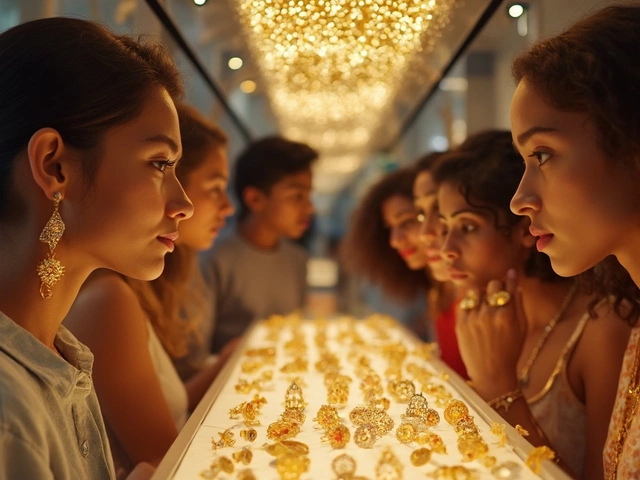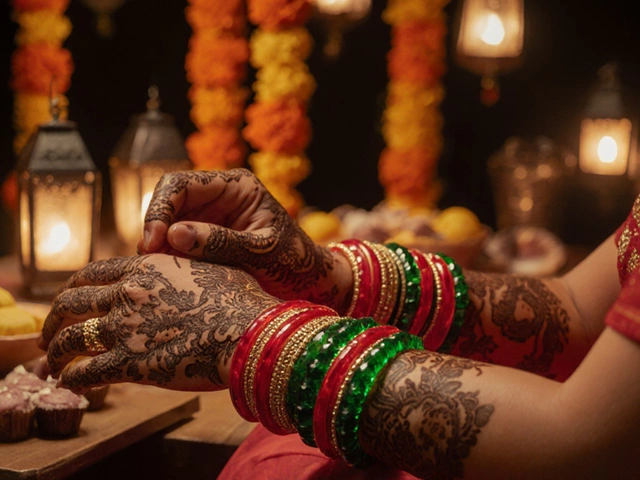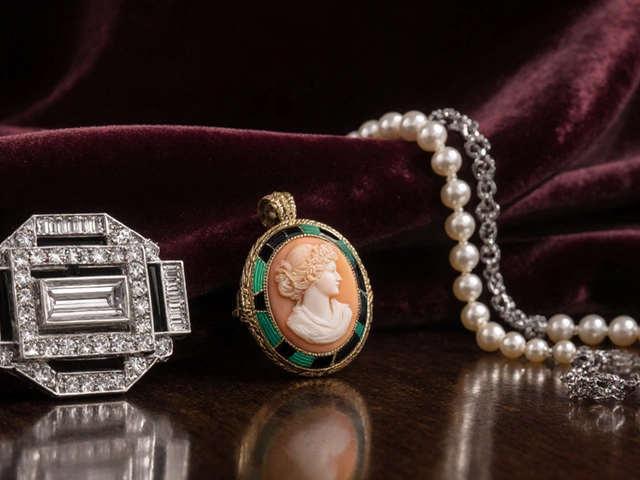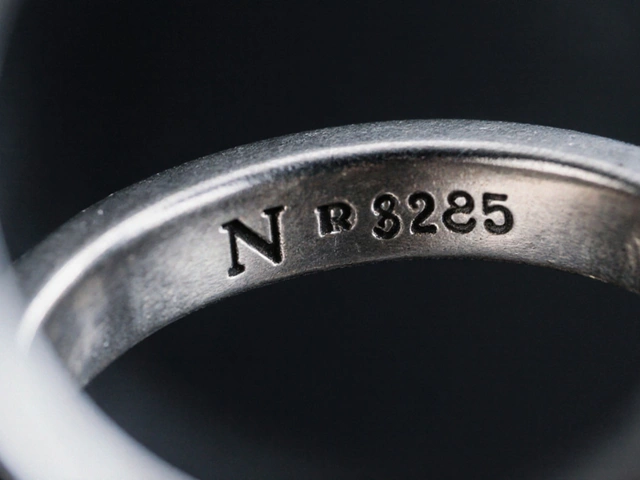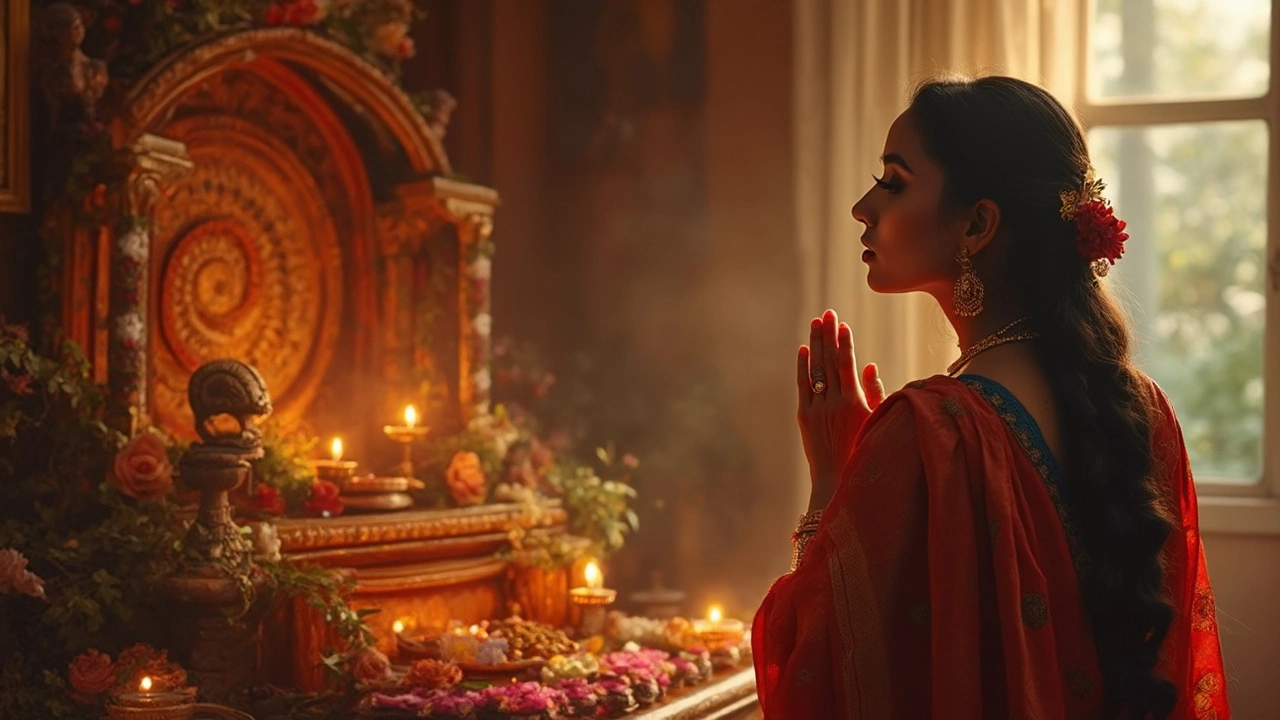
Most married women in India don’t take off their mangalsutra, and it’s not just about following some old rule. This black-beaded, gold-lined necklace is packed with meaning and tradition. You see it in films, at family gatherings, and on social media—it’s everywhere. But what’s the real story behind keeping it on, no matter what?
The thing is, this isn’t just another piece of wedding jewelry. It’s believed to act almost like a shield for your marriage. Shocking, right? Grandmothers will tell you that those tiny black beads fend off negative energy and keep stress away from your relationship. Even if you don’t buy into every superstition, that kind of emotional backup is tough to ignore.
But let’s get practical. For a lot of women, wearing a mangalsutra is part and parcel of daily life. Whether you work in an office, teach at a school, or run a business, you probably adjust your style to fit your routine. Especially now, when new mangalsutra designs are light, adjustable, or even come as bracelets and rings, keeping this tradition alive is way lower effort than it used to be.
- What Is a Mangalsutra Really?
- Cultural Roots and Beliefs
- More Than Symbolism: Daily Practicality
- Modern Designs That Fit Your Life
- Common Reasons for Wanting to Remove It
- Tips to Wear Your Mangalsutra Comfortably
What Is a Mangalsutra Really?
The mangalsutra isn’t just a gold chain; it’s one of the most recognized wedding jewelry pieces across India. At its core, it’s a necklace, usually made with black beads strung on a gold chain and a central pendant. Sounds simple, but there’s a lot packed into this little accessory.
If you sit down with an older family member, they’ll tell you the black beads aren’t random. They’re supposed to protect the marriage from bad vibes—literally. Some even believe if a bead falls off, it signals stress or negativity that the chain has absorbed, so you’re supposed to replace it as soon as you notice. That’s why a mangalsutra is way more than an ornament; it’s meant to protect your bond.
According to Dr. Shalini Singh, a researcher in Indian traditions: "The mangalsutra serves as both a social signal and a spiritual safeguard. For many households, it is non-negotiable when it comes to marriage rituals."
Most regions have their own take on the mangalsutra. In Maharashtra, women often wear the classic two gold vatis. In South India, the thali replaces the usual pendant, and in Gujarat, you’ll see elaborate chains with diamond-studded pendants. Even abroad, Indian brides carry their style—you’ll spot everything from chunky, traditional designs to minimalist chains that blend right in with Western outfits.
Here’s something interesting—a 2022 survey by Tanishq found that 78% of Indian married women still put on a mangalsutra daily, and nearly half said they’d never want to stop wearing it, no matter how modern their lifestyle gets. So, while designers are giving the mangalsutra a modern twist, the connection to tradition hasn’t really faded.
Not sure what parts make up a traditional mangalsutra? Here’s what you’ll usually find:
- Black beads: Said to ward off negativity and evil eye
- Gold chain: Represents prosperity and good luck
- Pendant or central piece: Varies by region and signals family tradition
So, when someone asks you, "What is a mangalsutra really?" You can confidently say it’s both a statement and a symbol, deeply tied to tradition, culture, and the idea of protecting marriage.
Cultural Roots and Beliefs
If you ask around in India why the mangalsutra is such a big deal, the answer usually goes back hundreds of years. This necklace isn’t just another wedding accessory—it’s a powerful symbol of marriage, much like a wedding ring in the West. Traditionally, the groom ties the mangalsutra around the bride’s neck during the wedding ceremony, and it’s meant to show the world that she’s married.
The design's not random, either. The black beads are said to keep bad luck and evil eyes away from the couple. That’s a belief that’s held strong across generations. Gold is believed to attract positive energy, while the thread or chain ties together promises made for a lifetime. These aren’t just old stories; they show up in religious texts too. In regions like Maharashtra, Andhra Pradesh, and Tamil Nadu, every community has its unique mangalsutra designs, and families pass down particular styles or patterns that have special meaning.
Even today, a lot of families believe a woman’s health, her husband’s life, and the peace in her home are somehow linked to whether she keeps her mangalsutra on. Removing it may be seen as disrespecting tradition or even inviting bad luck. Some South Indian customs go a step further—there, women won’t even change or break the thread without a big puja (ritual) for blessings and protection.
Not everyone believes in these stories in the same way, but there’s no denying the emotional importance this piece of jewelry holds. In fact, a 2023 survey by an Indian jewelry brand found that 78% of married women in urban India consider the mangalsutra essential, regardless of religion or region.
More Than Symbolism: Daily Practicality
People usually talk about the mangalsutra only in terms of tradition and marriage. But let’s be real: it does a lot more day-to-day. First, it’s an instant identifier. No matter where you are—at a grocery store, on the bus, at a party—people know you’re married because of that one piece of jewelry. There’s no confusion or awkward guessing.
Now, here’s something most people don’t realize. Wearing your mangalsutra keeps you connected to your partner, even if you’re hundreds of miles away working in a different city. It’s like carrying a piece of your relationship everywhere you go. That subtle reminder? It matters more than you’d think on tough days.
Functionality matters too. Modern mangalsutra designs are being built for real daily routines. Newer pieces are lighter and smaller, so you’re not panicking every time you change a shirt or rush to a meeting. Gold and glass beads are tough enough for chores and work. They’re scratch-resistant, so you don’t have to treat them like fragile heirlooms.
Check out how often women choose practical mangalsutras for daily wear versus special occasions:
| Occasion | Lightweight Design (%) | Traditional Heavy Design (%) |
|---|---|---|
| Everyday Wear | 73 | 27 |
| Festivals & Functions | 29 | 71 |
Turns out, almost three-quarters of women prefer light, everyday designs. It’s not just about looks; it’s about what works for your lifestyle.
Some even choose mangalsutra bracelets or rings instead of the classic necklace. Why? Same reason—they want the symbol, just in a form that fits their job or their favorite outfits. So, the rule doesn’t have to be “never remove it”—it’s more about always having it, in whatever form keeps life easy.

Modern Designs That Fit Your Life
The classic mangalsutra isn’t what it used to be. These days, there’s a huge range of mangalsutra designs out there, and they’re made with real women’s lives in mind. You don't have to worry anymore about a heavy, chunky chain getting in your way at work or snagging on your clothes.
Jewelers have gotten creative. Lightweight pendants, single-layer chains, minimal gold, and even adjustable lengths are super common now. There are short, bracelet-style mangalsutras that look like everyday jewelry, making it way easier to wear your wedding jewelry all the time—no matter where you go or what you’re doing.
You can even pick styles that double up as a part of your work or gym outfit. Didn’t think you could wear your mangalsutra to Zumba or with a formal shirt? Think again. Designs with just gold and black beads or tiny diamond studs are really popular for women who like to keep things simple but stylish.
- Pendant mangalsutras—Tiny, detailed, and come in all shapes, from traditional motifs to modern geometrics.
- Bracelet mangalsutras—Super practical if you work with your hands or don’t like anything around your neck.
- Layered chains—Look trendy and let you easily pair the mangalsutra with other necklaces.
- Customisable designs—Add your initials or a small charm for that personal touch.
According to a 2023 survey by the All India Jewelers Group, over 65% of urban buyers now look for modern, minimal mangalsutra styles instead of traditional chunky patterns.
| Type | Main Benefit |
|---|---|
| Short Chain | Comfort during daily activities |
| Pendant Style | Easy pairing with Western and Indian outfits |
| Bracelet/Ring | Won’t get in your way; good for active jobs |
| Adjustable Length | Switch up the style when you want |
If you want to keep the tradition but not the hassle, there’s honestly no excuse anymore. Between the variety of mangalsutra designs and all the new comfort features, it just makes sense to pick one that fits your real, everyday life.
Common Reasons for Wanting to Remove It
Even though a mangalsutra is packed with tradition and meaning, plenty of married women think about removing it at some point. Life gets busy, and sometimes practical stuff gets in the way of old customs.
- Workplace Restrictions: Some offices, like hospitals or factories, follow strict safety rules about jewelry. There are jobs where chains and necklaces just aren’t allowed due to the risk of getting caught in machines or spreading germs.
- Physical Discomfort: Not everyone finds necklaces comfy, especially if you have skin sensitivity or allergies to certain metals. Heavier or chunky mangalsutra designs can cause rashes or irritation, especially in heat or when you sweat.
- Sports and Fitness: Whether you’re hitting the gym, swimming, or doing yoga, jewelry can be a hassle. It might even break or get lost.
- Modern Style Choices: Some women just want to change things up, mix and match their look, or go minimalist. Sometimes, your everyday clothes or fashion choices don’t vibe with the traditional mangalsutra style.
- Personal Beliefs: Not everyone treats traditions the same. Some women might not feel a deep connection to the idea, or they may believe true commitment doesn’t need a symbol around your neck.
If you’re worried about breaking tradition, you’re not alone. A 2023 fashion survey found that nearly 38% of urban married women in India admit to removing their mangalsutra occasionally, mainly for comfort or practical reasons.
| Reason | Percentage (%) |
|---|---|
| Workplace Safety/Rules | 22 |
| Physical Discomfort | 18 |
| Fitness/Sports | 12 |
| Style Preferences | 6 |
| Other/Personal Belief | 8 |
No matter the reason, it’s clear that women have a whole range of practical and personal reasons for slipping off their mangalsutra—sometimes just for a little while, sometimes for good. If that’s you, just know, you’re definitely not the only one thinking about it.
Tips to Wear Your Mangalsutra Comfortably
Sticking to the tradition of wearing a mangalsutra every day is doable, but you want it to work for your lifestyle, not against it. Loads of women struggle with tangling, itching, or just feeling that their jewelry is in the way when they’re busy. Here’s the lowdown on keeping it comfy and hassle-free.
- Pick the right length and weight: Heavier mangalsutra designs can dig into your neck and make you sweaty. Most modern options now come in lighter gold or even minimalist thread styles. The sweet spot? Between 18-22 inches for daily use—it won’t stick to your skin in hot weather, and it hides easily under tops.
- Go for smooth and secure clasps: Some mangalsutras have those old-school bulky clasps that catch on hair or collars. When buying, test the clasp with one hand. The smoother and flatter, the better—no more snagging or morning wrestling matches.
- Try hypoallergenic materials if you’re sensitive: If you have skin allergies, look out for options made with 18K gold or try thread-based designs with limited metal. Brands now offer nickel-free versions too.
- Think beyond the neck: Not everyone’s into necklaces. Right now, there’s a trend for mangalsutra bracelets, rings, and even lightweight chain anklets. They follow all the same traditions but fit right into a busy or sporty lifestyle.
- Keep it clean: Sweat, perfume, and dust can build up fast. Wipe down your mangalsutra once a week with a soft cloth. If you’re wearing a heavily beaded style, check for dirt trapped in the beads and give it a gentle brush using an old toothbrush.
- Take it off for sports and heavy chores (but not for long): If you’re heading for a swim, wearing heavy gym gear, or doing deep-cleaning at home, it’s totally fine to take off your mangalsutra for a bit. Keep it in a small soft pouch to avoid scratches.
Here’s a quick look at the most comfortable mangalsutra styles based on recent user surveys and retailer trends:
| Style | Average Weight (g) | Best For |
|---|---|---|
| Lightweight Gold Chain | 7-10 | Everyday wear |
| Thread Mangalsutra | 3-6 | Allergy-prone skin |
| Mangalsutra Bracelet | 2-6 | Active lifestyle |
| Beaded Minimalist | 5-8 | Modern casual |
"The modern woman needs traditions to evolve with her life—wearing a mangalsutra should never feel like a burden," says designer Falguni Sharma, who specializes in wedding jewelry for urban women.
So, if you want to hold on to the meaning without the hassle, choose a mangalsutra design that fits your real life, not just your wedding day.


